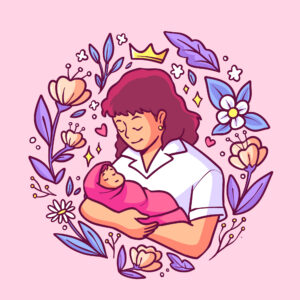When we talk about women, we are talking about 49.6% of the human population. Any issue impacting half of the world, warrants attention and needs immediate action. Yet women’s mental health has long been overlooked not only by the society but by women themselves.
Women’s mental health can be viewed as a combined term for the psychological, emotional, and social well-being of women. It addresses the challenges and experiences that women may face, influenced by biological, social, cultural, and environmental factors. Even though massive efforts are ongoing for women empowerment, mental health seems to be missing the attention and urgency that it deserves. Let’s try to understand why is that the case:
Social structure: Article by Sucharita Maji1 digs deep into the social, cultural and gender norms that dictate women’s behaviour in a society. As opposed to western countries, in non-western cultures ‘the-self’ is characterised by ensembled individualism, a self that is based on the perceptions of the society. In such cultures, women try hard to ‘fit the mould’ often at the cost of ‘self-silencing’. Women tend to hide certain emotions, feelings and struggles as they do not want to risk losing their relationships, or be viewed as ‘difficult’ at work. This behaviour develops an ‘over-eye’ in them which is like a cultural or moral standard that women continuously measure themselves against. Any deviation from this standard doesn’t seem acceptable. This constant need to put others before oneself often comes at a cost of self-neglect and self-sacrifice. Its no wonder that it leads to physical and psychological distress.
Stigma: Thanks to the efforts by various government and non-government organisations like Mohfw India, TheLivelovelaugh foundation, SangathIndia, etc. to name a few, the awareness about mental health has increased over the past decade. However, women’s mental health still continues to be burdened with a significant stigma. As per statistics, one in two women is struggling with their mental health but only few reach out for help. In most societies, women are put on a pedestal, expecting them to be ‘superhumans’. They are considered ‘goddess of sacrifice’ and ‘shakti’, and are expected to show resilience in most adverse circumstances. Thus women consider their mental health struggles as a sign of weakness and therefore do not reach out for help.
Additionally, even though there is a lot of ongoing research to understand the brain and its triggers, we still have long way to go. Brain or mental health is often treated as a separate entity even though it’s all part of one physical being. It is this enigma or mystery surrounding the brain that leads to fear or apprehension. Adding fuel to fire is the a) fear of societal judgement, b) the fear of missing out opportunities at work, and c) the impact on personal relationships. These are all barriers that deter women to speak up and reach out for help.
Lack of education/awareness: Lack of awareness/education acts as a huge hurdle in getting the right support. This is especially true in the area of reproductive mental health. Reproductive lifespan of a woman comprises of menarche (onset of periods), pregnancy-postpartum and menopause. Each of these biological processes are associated with various physical, psychological and emotional changes which are a normal part of women’s life. Yet for a vast majority of women these changes are extremely debilitating and have a huge impact on their quality of life. There are various conditions throughout the reproductive journey of some women that negatively impacts a woman’s well being including PMDD, PCOD, infertility, endometriosis etc.
a) PMDD:Based on research in U.S. (IAPMD)3 and U.K.(NAPS)4, approximately 5% women in the reproductive age group suffer from a very severe form of PMS known as Premenstrual dysphoric disorder (PMDD). In India, PMDD still remains a condition which is relatively unknown. One of the reason could be the difficulty in diagnosis of PMDD. Due to the cyclic nature of this condition women feel absolutely normal for half of their cycle, while in the second half PMDD wreaks havoc. It is therefore often undiagnosed, under-diagnosed and even misdiagnosed.
b)Postpartum depression is another condition that has gained attention in the recent years. Around 20% of new mothers5 go through various psychological conditions that not only impact their mental health and well-being but also have a huge impact on the development of child. Suicide remains the leading cause of direct maternal deaths in first postnatal year. Healthcare around the world focusses on the pregnancy which includes getting the right nutrition to the mother, regular checkups, and ensuring safe delivery for both mother and child. But once the baby is born, the focus shifts on the baby and the new mother is often left to figure out the journey on her own. Her own physical as well as mental health takes a backseat. New mothers are hesitant to reach out for help due to the guilt associated with her intense feelings and the fear of judgement that she is unable to take care of a baby efficiently.
c) Menopause6 is a gradual process in a woman’s midlife when she has gone 12 consecutive months without a menstrual cycle. As opposed to PMDD and postpartum depression, it is a natural transition in life and not an illness. However, for a lot of women this transition is not easy and without the right support and information it could worsen her physical and mental health especially in the old age.
Future prospective
Article by Rahul Shidhaye2 published recently states that the age standardised suicide rate for Indian women (11·1 per 100000) is more than double that of the global rate. This are shocking statititics and we need to dig deep to understand the struggles of Indian women. Mental health of women is very different from that of men and is influenced by biology, society, culture and economic factors. To solve this multifaceted and complex problem, a concerted, multidisciplinary approach is required. We need more education and awareness at societal level, policy changes at workplaces to support female employees, female targeted mental health campaigns and more funding for research in the field of women’s mental health.
What women are asking for is a little bit of empathy and support through their struggles, which in a progressive society is not too much to ask for. Don’t let them suffer in silence.
References
- Self-silencing and women’s health: A review. Sucharita Maji and Shikha Dixit. International journal of social psychiatry. Dec 2018.
- Suicide in Indian women. Rahul Shidhaye. The Lancet Public Health. May 2023.
- International association of Premenstrual dysphoric disorder (IAPMD).
- National association for premenstrual syndrome.
- National Institute of Mental Health.
- https://www.mentalhealth.org.uk/explore-mental-health/a-z-topics/menopause





